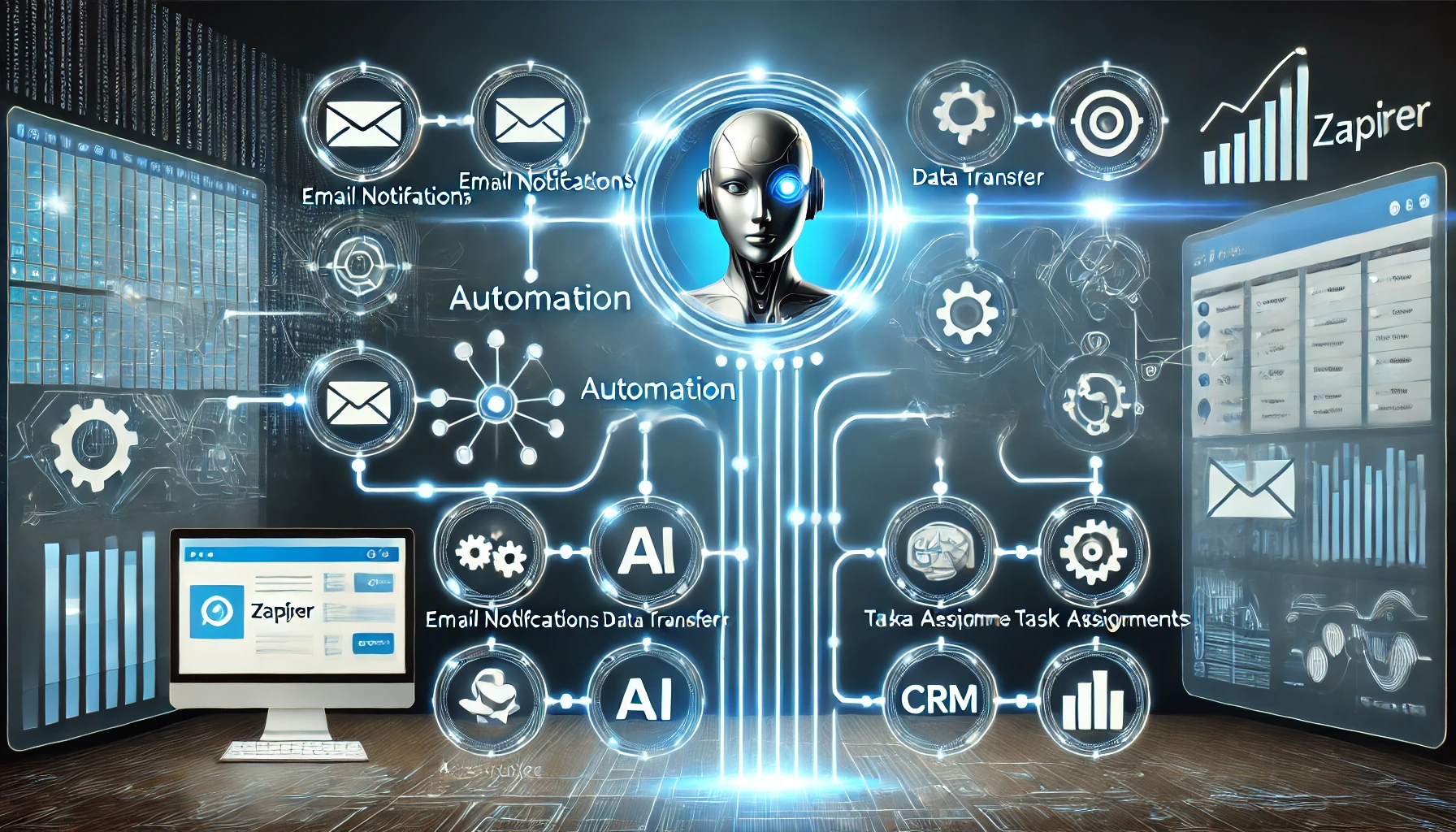In today’s fast-paced business environment, small businesses need every advantage they can get to stay competitive. Artificial Intelligence (AI) is no longer just a buzzword for tech giants—it’s a game-changer for small businesses too. From automating repetitive tasks to providing actionable insights, AI can significantly improve productivity and efficiency.
In this blog post, we’ll explore how AI can help small businesses streamline operations, save time, and grow sustainably. Whether you’re a small business owner or a manager, you’ll find actionable tips to leverage AI for your business.
Why Small Businesses Should Embrace AI
Small businesses often face challenges like limited resources, tight budgets, and time constraints. AI can help overcome these hurdles by:
- Automating repetitive tasks
- Providing data-driven insights
- Enhancing customer experiences
- Reducing operational costs
According to a McKinsey report, businesses that adopt AI see a 20-30% increase in productivity. Let’s dive into how AI can make this happen for your small business.
6 Ways AI Can Boost Small Business Productivity
1. Automating Repetitive Tasks

One of the biggest productivity killers for small businesses is time spent on repetitive tasks like data entry, invoicing, and scheduling. AI-powered tools can automate these processes, freeing up time for more strategic work.
- Examples of AI Tools:
- Zapier: Automates workflows between apps.
- QuickBooks: Automates accounting and invoicing.
- Calendly: Schedules meetings without back-and-forth emails.
By automating these tasks, your team can focus on high-value activities like customer engagement and business growth.
2. Enhancing Customer Support with AI Chatbots
Customer support can be time-consuming, especially for small teams. AI-powered chatbots can handle common customer queries 24/7, ensuring quick responses and improved customer satisfaction.
- Benefits of AI Chatbots:
- Reduce response times
- Handle multiple queries simultaneously
- Provide personalized recommendations
Tools like ManyChat and Tidio make it easy to implement chatbots without coding knowledge.
3. Improving Marketing Efforts with AI Insights
Marketing is crucial for small businesses, but it can be overwhelming without the right tools. AI can analyze customer data to provide insights into buying behavior, preferences, and trends.
- AI Marketing Tools:
- HubSpot: Offers AI-driven marketing automation.
- Mailchimp: Uses AI to optimize email campaigns.
- Google Analytics: Provides predictive analytics for better decision-making.
With these insights, you can create targeted campaigns that resonate with your audience and drive results.
4. Streamlining Inventory Management
For small businesses in retail or e-commerce, managing inventory can be a headache. AI can predict demand, optimize stock levels, and reduce waste.
- AI Inventory Tools:
- TradeGecko: Tracks inventory in real-time.
- Cin7: Automates inventory and order management.
By keeping the right products in stock, you can avoid overstocking or stockouts, ensuring smooth operations.
5. Boosting Employee Productivity with AI Assistants
AI-powered virtual assistants like Microsoft Copilot or Google Assistant can help employees manage their tasks more efficiently.
- Tasks AI Assistants Can Handle:
- Setting reminders
- Managing calendars
- Drafting emails
These tools act as personal productivity coaches, helping your team stay organized and focused.
6. Reducing Costs with Predictive Analytics
AI can analyze historical data to predict future trends, helping small businesses make informed decisions. For example, predictive analytics can forecast sales, identify cost-saving opportunities, and optimize pricing strategies.
- Examples of Predictive Analytics Tools:
- Tableau: Visualizes data for better insights.
- Sisense: Offers AI-driven business intelligence.
By leveraging predictive analytics, you can make smarter decisions that drive growth and profitability.
How to Get Started with AI for Your Small Business

Implementing AI doesn’t have to be complicated or expensive. Here’s a step-by-step guide to get started:
- Identify Pain Points: Determine which areas of your business need improvement (e.g., customer support, marketing, inventory).
- Research AI Tools: Look for affordable, user-friendly tools that address your specific needs.
- Start Small: Implement one AI tool at a time to avoid overwhelm.
- Train Your Team: Ensure your team understands how to use the new tools effectively.
- Monitor Results: Track the impact of AI on your productivity and adjust as needed.
FAQs About AI for Small Businesses
1. Is AI expensive for small businesses?
Not necessarily. Many AI tools offer affordable pricing plans tailored for small businesses. Start with free trials or freemium versions to test their effectiveness.
2. Do I need technical skills to use AI?
No. Most AI tools are designed for non-technical users and come with intuitive interfaces and tutorials.
3. Can AI replace human employees?
AI is meant to augment human capabilities, not replace them. It handles repetitive tasks, allowing your team to focus on creative and strategic work.
4. What are the risks of using AI?
Potential risks include data privacy concerns and over-reliance on automation. Always choose reputable tools and maintain a balance between AI and human oversight.
